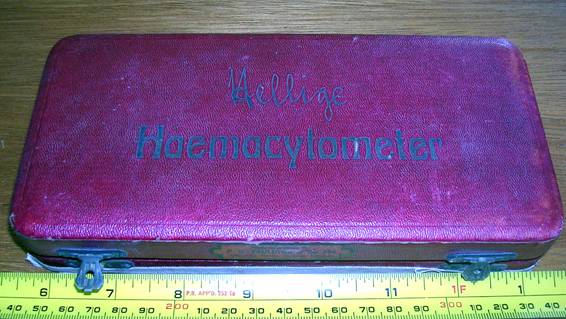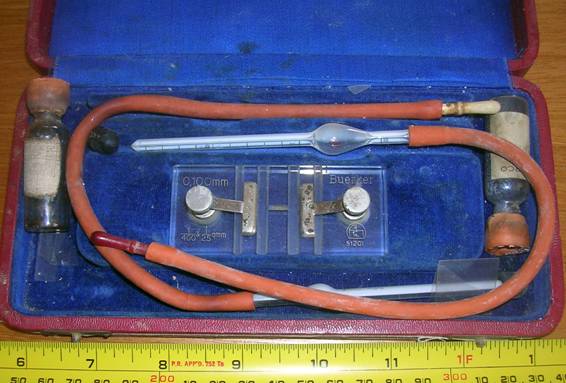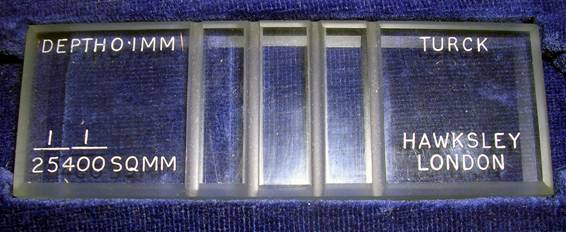
South Australian Medical Heritage Society Inc
Website for the Virtual Museum
Home
Coming meetings
Past meetings
About the Society
Main Galleries
Medicine
Surgery
Anaesthesia
X-rays
Hospitals,other organisations
Individuals of note
Small Galleries
Ethnic medicine
- Aboriginal
- Chinese
- Mediterran
Haemocytometers
Owner: Dr. Richard Bowering
Purpose: Counting of red and white blood cells.
Description: Red box 20x 8 cm. labelled “Haemocytometer”.
Contents: Counting chamber, cover slide, red and white mixing pipettes & fluids.
Before the advent of the Coulter counter the estimation of the red and white blood cells was done manually with the aid of a microscope. The counting chamber had engraved counting nets and the number of blood cells per square was related to the total blood count. Six or more models of counting chambers were produced.
A typical chamber had a depth of 1/10 mm and 400 squares with 1/10 mm sides giving a volume of 1/4000th cubic mm. A red mixing pipette was used for the red cell count, and the white pipette for white cells. A different dilution fluid was used for red or white cells.
Blood was sucked up to the 0.5 or 1.0 mark on the pipette giving a dilution of 1/200 or 1/100 when the appropriate diluting fluid is aspirated to the 101 mark and thoroughly mixed. The counting chamber is then filled. Usually one counts the number of cells over 5 large squares (5 x 16 ie 80 small ones). The number of small squares counted is then multiplied by the volume (4,000) and the dilution (200) and divided by the number of small squares counted (80).
If the total number of red cells counted is 500 then the red blood cell count will be 500 x 200 x 4,000 divided by 80 = 5,000,000 red cells per cubic mm. A similar formula was used for determining the white cell count.

Box container for Hellige Haemocytometer

A Buerker counting chamber, red and white pipettes and diluting fluid

Close up view of a Turck counting chamber. Other chambers were designed by Neubar, Fuchs-Rosenthal and Nageotte. The latter was used for cerebrospinal fluid.
-o0o-